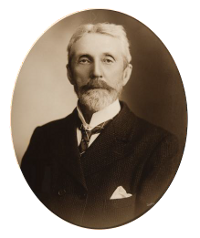Te Whare o Rehua Sarjeant Gallery holds a collection of more than 8,000 items of national and international significance, spanning four centuries of European and New Zealand art history. With an ongoing programme of exhibitions and events, the Sarjeant Gallery is an important community asset that can be accessed by locals and visitors alike.

Henry Sarjeant 1829 – 1912
A Generous Gift
Te Whare o Rehua Sarjeant Gallery was founded through the generosity of one man to his home city. In 1912, Henry Sarjeant left a huge sum of money – the equivalent of over $70 million in today’s terms – to establish the gallery “as a means of inspiration for ourselves and those who come after us”. The Gallery opened in 1919 and is recognised as one of the country’s most important heritage buildings. Over the last 103+ years, through the Sarjeant bequest and the many kind gifts of subsequent benefactors, the collection has become one of national importance and numbers over 8500 works of New Zealand and international art, spanning 400 years. The Sarjeant Collection includes the one of New Zealand’s best photographic collections, which includes the Denton Collection, and outside private collections houses the largest holding of Edith Collier’s work.
Looking to the future
A century later we are building on Henry’s legacy – preserving and presenting over four centuries of art. Our gift to the future is a new century of inspiration. The redevelopment will look after the Sarjeant’s nationally-important collection with environmentally-controlled storage and exhibition galleries; enhance public access through improved exhibition and education spaces; and enable the preservation of Whanganui’s most iconic building.

